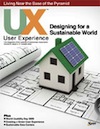Smart tools to reduce our impact on the environment
In their contribution, Experientia collaborators Michele Visciola, Erin O’Loughlin and Irene Cassarino reflect on how smart tools can help reduce our CO2 impact, and illustrate this with a case study on the company’s winning proposal (together with ARUP and Sauerbruch Hutton) for the design of a sustainable urban district in the Jätkäsaari area of Helsinki, Finland.
Some people believe that making people consume less and more carefully is not a user-centred approach because it is based on forcing people to give up things. By changing our perspective, we could see another story. We have the ability to leverage the freedom of choice of human beings to consume less to improve their health and the health of the community they belong to. They have to be provided with the right information to understand the value of their actions on their personal wealth and happiness, and tools to make such an understanding actionable. Not to have more, but to be better.
Experientia in Turin, Italy shared with ARUP in London and Sauerbruch-Hutton, in Berlin (an international agency for architecture and urbanism), an international design competition (Low2No): designing a sustainable urban district in the Jätkäsaari area of the city of Helsinki. Our responsibility was to address the delicate theme of how to initiate behavioral change to support a sustainable style of living in this completely renewed urban district.
A comprehensive strategy to facilitate behavioral change has to address the various factors that influence and constrain people’s actions, whether physical, personal, social or cultural. People must feel they have control over their consumption, with actions that have visible effect on it. Smart meters, dynamic pricing systems, and data on cost and peak usage can all address this concern.
Social behavior can also be considered as a community-regulatory process through which people assess and verify their adherence to social norms and policies. We recommended the design and implementation of a large program of design ideas and services aimed at creating social actions and customs based on green values.
Because our perception of what’s possible dictates our standards of what’s acceptable, we suggested included designing incentives to sustain behavioral change, along with sensors and monitoring installations that we expect will affect policy changes well beyond the boundaries of the renewed urban district.
Download article (pre-publication version)




